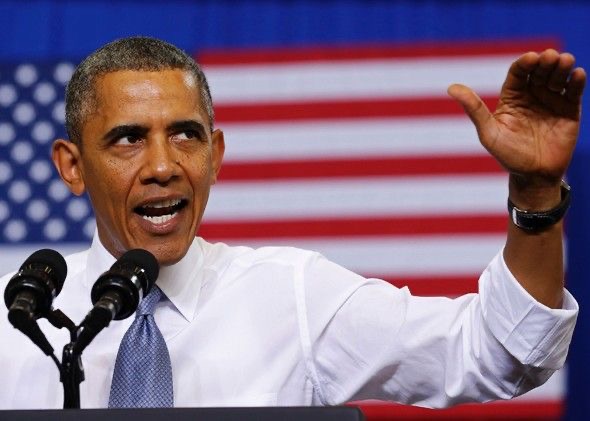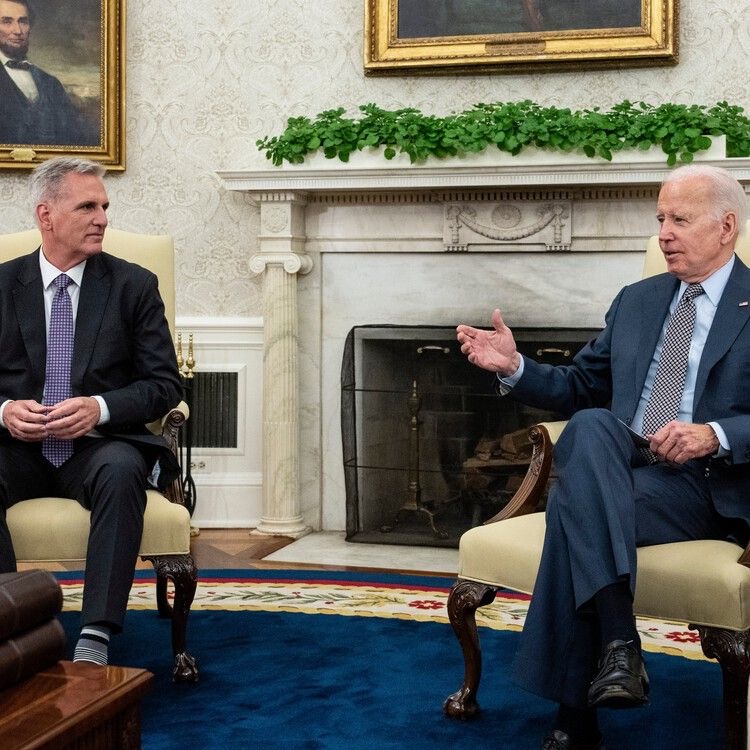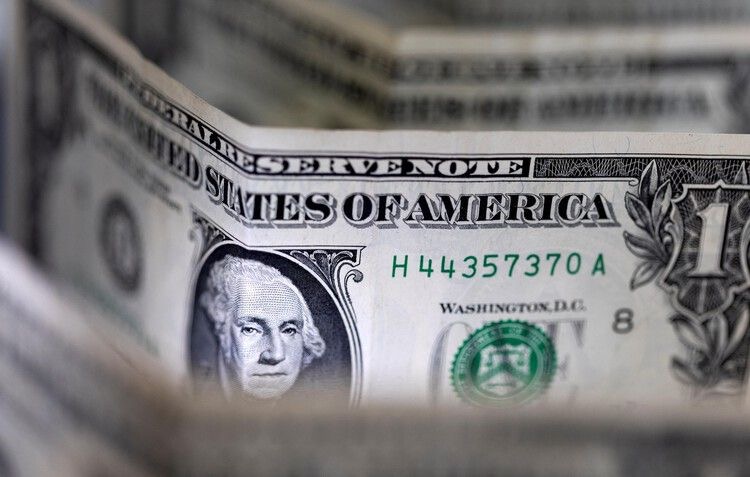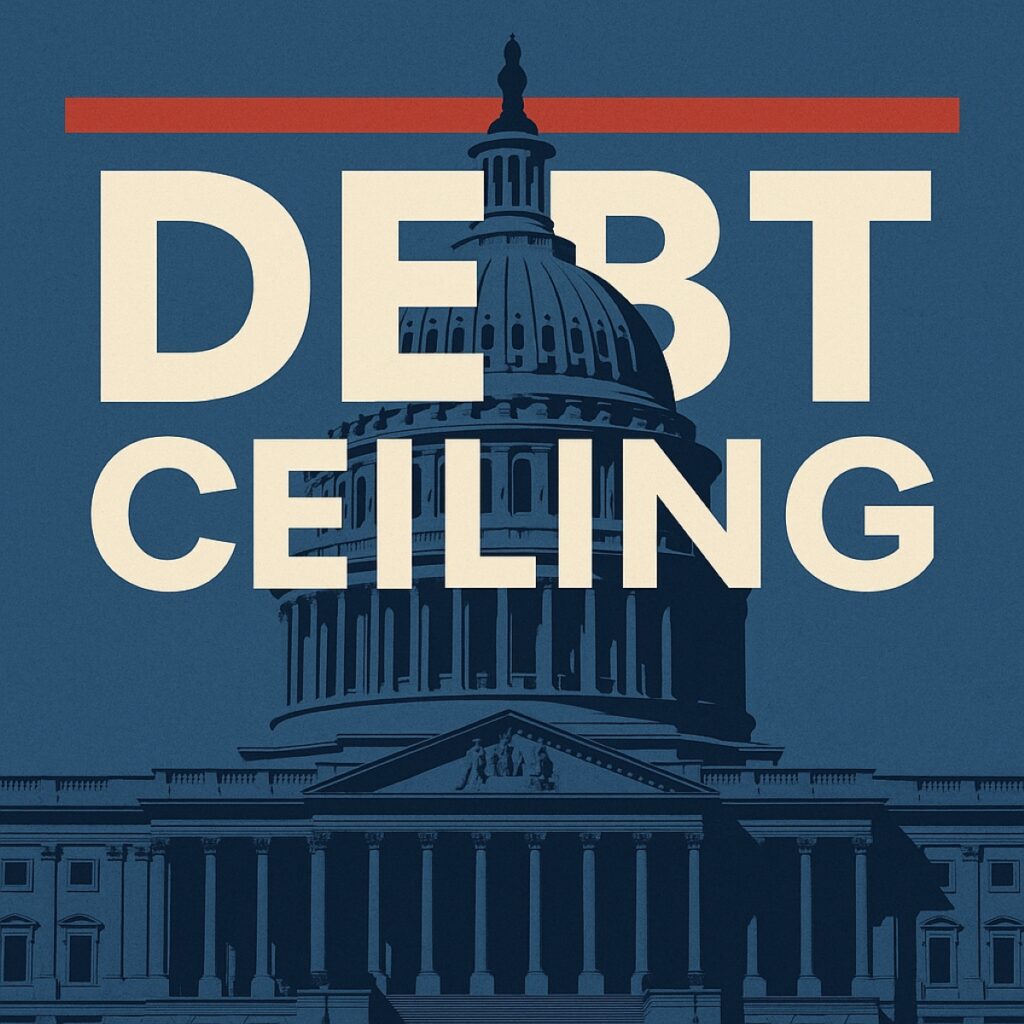“What is the point of a debt ceiling if we keep raising it?”
— A viral tweet, 245K likes later, still unanswered.
Every few years, Washington does what Washington does best: put on a dramatic performance, like a rerun of a not-so-good TV show.
First, it walks up to the edge of a financial disaster, looks down into the economic abyss, and says, “What if… we just jump?” Then right before everything explodes, it backs away slowly, wipes its forehead, and proudly says, “Phew! Crisis avoided!” —as if it didn’t create the crisis in the first place.
The U.S. debt ceiling drama is the most repeated, confusing, and performative crisis in American politics.
Cue the media frenzy. Cue the dramatic press conferences. Cue the late-night deal to suspend, raise, or extend the debt ceiling… again, just in time for everyone to claim they saved the day. The U.S. debt ceiling now causes panic and regular chaos, a recurring national crisis.
If this feels like déjà vu, that’s because it is. The U.S. debt ceiling drama is the most repeated, confusing, and performative crisis in American politics. It is the economic equivalent of a soap opera: high drama, little logic, and the same recycled plot every season.
The only real suspense is whether, each time it happens, they actually mess it up.
But what is the debt ceiling? Why was it created? And if it keeps getting raised, why have it at all? Let’s take a journey through the chaos, the past, and the present of America’s borrowing battles.
The Birth of the Debt Ceiling: A World War I Panic Button

To help you understand why the U.S. even has a debt ceiling at all, we need to go back—way back—to a time before America had 24-hour news coverage, social media, outrage, or deficits worth trillions of dollars.
Back in 1917, the U.S. was getting ready to join World War I. Until that time, the government had to obtain permission from Congress every time it wanted to borrow money, regardless of the amount. But this process became inefficient, especially during the war.
To expedite the process, Congress passed the Second Liberty Bond Act in 1917. This law allowed the Treasury Department to borrow money more easily. However, it also imposed a certain limit on the total amount of debt that the government could carry.
This limit is now known as the debt ceiling. At first, it was just a bureaucratic guardrail, meant to keep borrowing under control. Over time, it became a political weapon, a political tool used for arguments and power play.
Fast forward to the present, and the U.S. debt ceiling now causes panic and regular chaos, a recurring national crisis.
Debt vs. Deficit: What’s the Difference
Before we jump into the whole debt drama, let’s clear up two terms that people usually mix up:
- What Is Deficit?
A deficit is when the government spends more money than it earns in a year.
Think of it like earning $80,000 a year but spending $100,000. You’re short $20,000, so you borrow it.
- What Is Debt?
Debt is the total amount the government has borrowed over time to cover all those yearly shortfalls. It is similar to the total balance on your credit card, which continues to grow as you borrow each month.
Now that we’ve cleared that up, let’s move on.
The debt ceiling is not about how much the government spends or how big the deficit is. It simply places a limit on how much the government is allowed to borrow to cover expenses it has already committed to.
That’s why the whole thing can feel a bit silly. It’s like using your credit card, then sitting around arguing with yourself about whether to pay the bill.
Imagine your friend promises to throw a big party. They’ve already booked the hall, ordered the food, and hired the DJ, but they haven’t paid yet.
Now, they realize they don’t have enough money in their account to cover everything, so they try to borrow more from the bank to pay the bills.
But suddenly, their parents, who control how much they’re allowed to borrow, say:
“Nope, you’ve already hit your borrowing limit!”
Your friend isn’t asking for more money to add new expenses; they just want to pay for the party they already planned. But if they can’t borrow more, everything falls apart. The DJ leaves, the caterer cancels, and the party crashes.
This is exactly what happens with the debt ceiling.
The U.S. government has already agreed to allocate funds for items such as salaries, healthcare, and social security. However, if it reaches the debt ceiling, it is not allowed to borrow more to pay those bills. Therefore, it risks defaulting, not because it wants to spend more, but because it can’t finish paying for what it has already ordered.
That’s why the whole thing can feel a bit silly. It’s like using your credit card, then sitting around arguing with yourself about whether to pay the bill.
“That’s pretty much what the U.S. government does…every few years.”
When the U.S. Fumbled the Bag (1979 Edition)
Let’s go back to 1979, the first time America almost tripped over its own debt. The Treasury was already drowning in paperwork.
Surprisingly, it was not caused by some dramatic political fight or Congress yelling at each other on TV. No! This one was thanks to… a paperwork mess and a computer glitch. (Yep, even the government had IT problems back then.)
It was like a messy divorce but with federal funding.
Here’s what happened:
- Congress waited until the last second to raise the debt ceiling (a classic move).
- The Treasury was already drowning in paperwork.
- Then their system bugged out, so the government accidentally missed a few payments on its bonds. Not by weeks, just a few days. But it was enough to make investors sweat.
For the first time ever, the U.S. government appeared somewhat shaky. Interest rates increased, and people started asking, “Wait, can America actually miss a payment?”
You’d think this would be a wake-up call, like, “Let’s never cut it that close again.”
Haha. Wrong!
1995: When Clinton and Gingrich Had a Budget Showdown
Picture this: it’s the 1990s. The internet still makes screechy dial-up noises. People are wearing denim-on-denim, styled with afros and fully-blown out curls. Meanwhile, Washington, D.C. was serving political drama.
President Bill Clinton was suddenly facing a new Congress that was led by a Republican named Newt Gingrich (Speaker of the House). Newt and his crew basically said to the President:
“We will raise the debt ceiling, but only if you significantly reduce government spending.”
Clinton replies with the political version of “Nope.”
The next thing that happened was a full-on budget standoff that ended with consequences:
- Thousands of government workers were told not to come to work.
- National parks and museums were closed!
- Social Security checks were delayed!
- The world was watching and asking if America was okay.
It was like a messy divorce but with federal funding. Eventually, after weeks of back-and-forth, Congress raised the debt ceiling anyway. But the whole ordeal left behind political bruises, public frustration, and a warning: don’t take silly risks with the country’s finances just to make a political point.
2011: The Debt Ceiling Goes Nuclear
By 2011, the U.S. had already seen its fair share of debt ceiling drama. But this one? This one went full blockbuster mode.

President Barack Obama was in office, and the Republicans (again!) controlled the House. They told Obama:
“We will only raise the debt ceiling if you agree to spend less.”
Obama said:
“Guys, we’ve already spent the money. Now you want to fight about paying the bill?”
But Congress wouldn’t budge. The U.S. government nearly defaulted, which would have been akin to the world’s richest person suddenly saying, “I’m not paying my credit card bill.” Things got so bad that Standard & Poor’s (S&P), one of the world’s biggest credit rating agencies, said:
“Okay, we’re downgrading the U.S. from AAA to AA+.”
(Translation: “You people are making us nervous.”)
It was the first time in history that the U.S. lost its perfect AAA rating from Standard & Poor’s. The stock market entered a full-blown panic mode, causing the Dow to drop by more than 2,000 points in just a few weeks.
Even countries that didn’t like America were hoping the country would get its act together.
At the end of the whole drama, a deal was eventually reached. Congress didn’t want to be blamed for accidentally crashing the economy. However, it was already too late; the damage had already been done to America’s reputation.
2023: The Same Script but a Different Cast
In 2023, the same thing happened. It was a different year, a different president, but still the same drama.
This time, it was President Joe Biden against Republican House Speaker Kevin McCarthy. And guess what? They were fighting over the debt ceiling again, like it’s a normal tradition.

The government was about to run out of money again, and the threats started pouring in:
- TV news started counting down the days until default!”
- Officials issued warnings saying things like “It could cause a recession!”
- The public started lamenting, saying, “Haven’t we done this already?!”
Biden and McCarthy went back and forth, making markets nervous, and just when it seemed like the U.S. might actually forget to pay its bills…
Boom! The expected miracle occurred.
A last-minute deal was proposed to “suspend” the debt ceiling until 2025. So yes, they played the whole thing all over again.
The Unending Cycle
At this point, the debt ceiling saga is like a bad sequel that top men keep making:
- The same plot: The U.S. risks default.
- The same cliffhanger: Will Congress raise it in time?
- And sure enough, the same ending: Only after maximum chaos.
Even Netflix would cancel a show that is this repetitive.
Why Not Just Get Rid of the Debt Ceiling?
This question keeps economists awake at night and makes regular people wonder when they hear the news.
The debt ceiling is not just about economics. It is about performance.”
Why not just get rid of it?
Most countries don’t have a debt ceiling; instead, they borrow money as needed, based on their budget and the strength of their economy. This seems reasonable, right?
But for America? Nope.
America loves drama. So they keep the debt ceiling, which is basically a “Do Not Cross” sign that they keep crossing anyway.
Even past Treasury secretaries and Federal Reserve bosses have called it “Pointless, dangerous, and a self-inflicted punch to the face.”
So why does it still exist?
There is only one reason: politics.
The debt ceiling is not just about economics. It is about performance. It gives lawmakers a chance to make motivational speeches about the national debt, blame the other party for being “reckless,” and then film campaign ads while pretending to “stand strong.” In short, the debt ceiling still exists in America because it is politically useful, even if it is economically disastrous.
The $1 Trillion Coin and Other Solutions
Ah, yes, let’s talk about the infamous $1 trillion platinum coin. No, it is not a joke. It’s a legit idea that experts have suggested in real government buildings.
Here is how they planned to use it:
- The U.S. Mint will make a shiny platinum coin.
- It will slap “$1,000,000,000,000” on it.
- Give the coin to the Federal Reserve.
- And then, boom, the money will be unlocked, and the crisis will be avoided.
Is the plan legal? Technically, yes. You have a 1997 law to thank for collectible coins. It’s just that back then, no one thought it would be used to avoid a government shutdown.
In reality, it forces Congress to panic, blame each other, bring the country to the edge of financial chaos
Although the coin has never been used, it still surfaces every time the debt ceiling debate arises.
Other solutions lawmakers came up with:
- Repealing the debt ceiling.
- Tying it to the federal budget so that if a budget is approved, the debt ceiling will be automatically raised.
- Letting the president raise it, unless, of course, Congress objects.
“Spoiler: None of these ideas got passed into law.”
What If America Actually Defaulted?
Okay, fun is over. Let’s talk about the scary scenario. Until this moment, the U.S. has never said that it will not pay its debt. But what if it ever did?

Here’s what might happen:
- Interest rates will explode: Borrowing money may become way more expensive.
- Markets may freak out: Stocks may plummet, and pensions may tremble.
- The dollar may drop and probably lose its special global status
- Payments may get delayed. Social Security, Medicare, and military pay may all be affected
Even a short-term default could leave a lasting scar on America’s financial reputation. Remember 2008 and the global mess that occurred? This would be worse.
So, What is the Point?
Now we come back to that viral question, “What’s the point of a debt ceiling if we keep raising it?”
In theory, it is supposed to force the government to be responsible with money, but in reality, it forces Congress to panic, blame each other, bring the country to the edge of financial chaos, and then vote to raise it anyway.
The Takeaway
Here’s the truth. The debt ceiling is not just about dollars; it is about the story America tells itself about responsibility, stability, and leadership. Is it a country that pays its bills like grown-ups? Or a country that gets very close to defaulting every few years just to win a political argument?
Until we figure that out, the déjà vu will continue to occur. So the next time the crisis returns, just remember:
“The ceiling isn’t the real problem. The game is.”
And unless someone changes the rules, lawmakers will continue to play it. Again and again and again.
What do you think?
Should America keep the debt ceiling, remove it permanently, or mint the $1 trillion coin? Drop your hot take in the comments.


